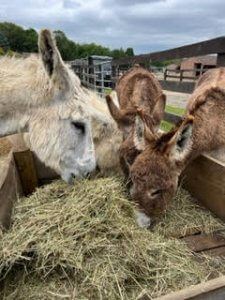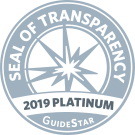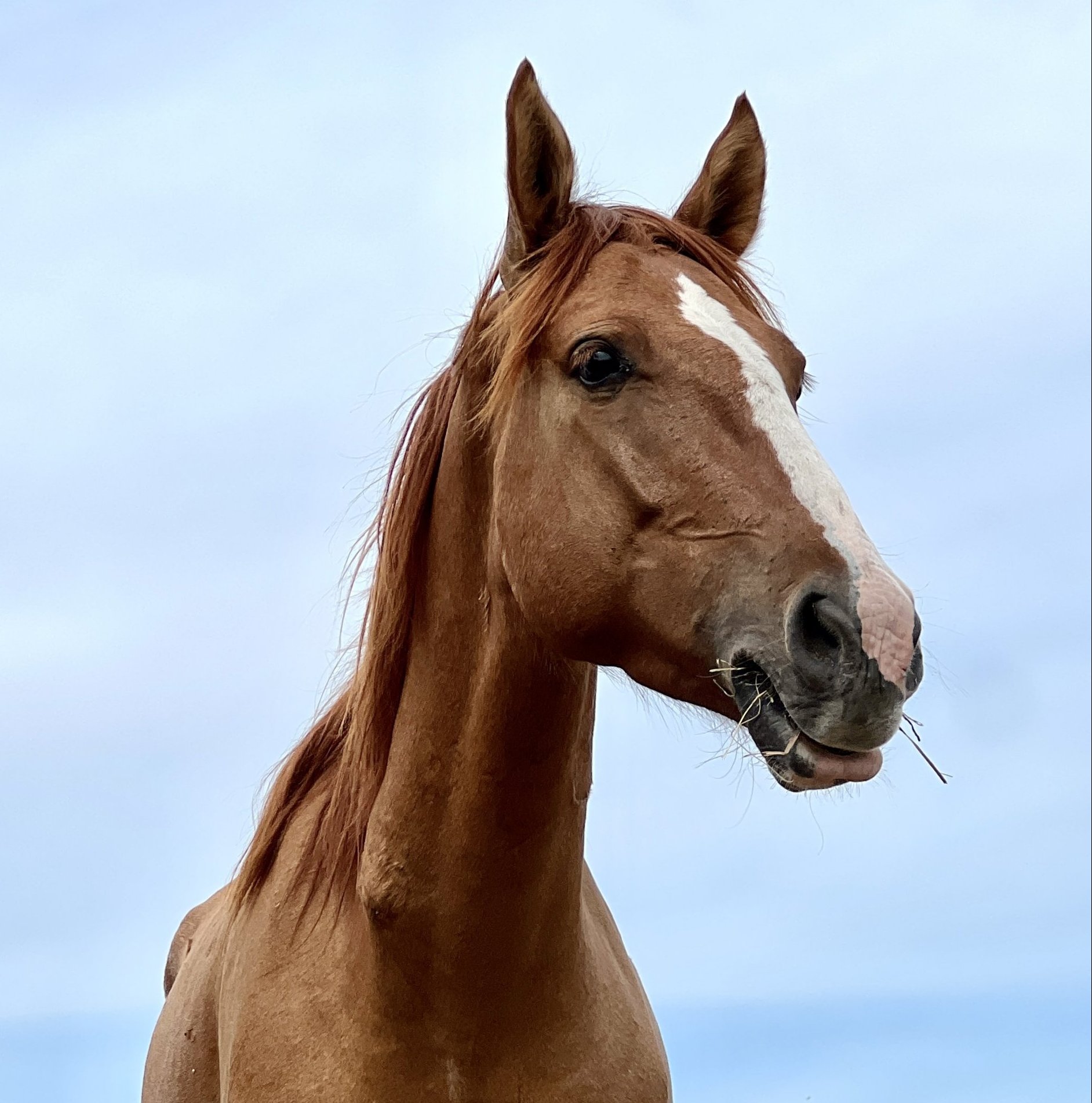
Hello Friends.
I hope you’re doing well and enjoying your time with family, friends, and all of your companions—equine, canine, feline, and other!
Before I begin with what’s been on my mind, I want to take a moment to thank Marylou, Founder and Executive Director of 13 Hands, as well as the staff members who work tirelessly to ensure the safety of the herd, the volunteers, and all of our visitors. Over a year ago, with careful consideration, Marylou and her staff gave me permission to interact with their rescues so that I could write this blog and promote the stories that would connect supporters with the rescue mission. I recognize that this is an enormous privilege.
I want to emphasize that at 13 Hands, safety is paramount. When I interact with a rescue—in their field where they’re part of a herd—the experiences can seem magical. But I want to emphasize that every time I enter a paddock, I am acutely aware of the risks. And—13 Hands takes these risks very seriously. For the safety of all of us, humans and equines, 13 Hands has a strict safety protocol: When you volunteer or visit rescues in their paddocks, you must be accompanied by a staff member or a senior volunteer who knows the herd. The only exception is when Marylou or another senior staff member grants permission.
This safety message fits in well with what I want to share with you in this post. Permission—or consent—is a privilege.
Today I visited Basil and Giovanni, two yearling donkeys whose capacity for giving and receiving physical affection is infinite. I visit them often, so they know me. On any given day, I walk into their pen, call their names, and relish their little march over to me. I stand with them, rubbing their faces, running my fingers through their dusty coats, detangling little knots in their hair. They lean into me, their bodies warm, accepting my touch and my crazy affirmations: “Oh, you guys are just the best,” and “You two are insanely cute.” They soak up my attention, and I pretend they understand exactly what I’m saying.
It wasn’t always this way. I met both of them when they were very little. Basil, in particular, would only approach me if I was kneeling down. Giovanni, under the watchful eye of his mom Gina, was a little more confident, but I still had to proceed slowly. Both Basil and Gio demanded I earn their trust. Once they knew me, they gave me their permission to really pet them—to use my hands to convey care and love. They continue to give me that permission each time I visit, and I’m grateful for it.
The idea of earning permission or consent from an animal is intriguing to me. Anyone who lives with a pet or keeps animals on a farm knows it’s not always possible to do. For example, when your dog needs a painful hot spot treated and isn’t too excited about the sting your topical solution will cause, you use treats and distractions to apply the medication, but that’s not truly consent, is it? It’s more like trickery. When your dental-phobic horse sees the vet’s speculum and refuses to cooperate, you might have to sedate them to get them the treatment they need. Once again, you’re not truly receiving consent, but you must proceed anyway for the health of your horse.
What, then, does it look like to ask an animal for consent and to receive it?
Among rescued equines, asking for consent—Can I touch you?— and obtaining it can be a very slow process. It might start with standing in a field, allowing the herd to acknowledge your presence without any interactions whatsoever for multiple visits. Perhaps weeks. Perhaps months. More often than not, someone will get curious and make their way over to check you out. With that one herd member, the next step in asking for consent is simply allowing them to sniff you. It might even work to extend your arm and open your hand. However, it’s possible your extended arm will be perceived as a threat—consent denied!—and so you have to go back to simply being a calm presence in the field. The point is, asking for consent takes a different form and follows a different timeline with each rescue. But if your goal is to establish a trusting connection, asking for consent is crucial.
What I’ve learned about receiving consent is powerful, too. The rescues who’ve given me permission to touch them have done so in various ways, showing me where they’re comfortable being touched (by curling their necks or lowering their heads), and letting me know their limits (usually by walking away). They deliver their messages pretty effectively: “Yes you can rub my neck,” and “I don’t think you’re a threat but I’d appreciate just a light touch on my nose, please,” and “I really love being groomed but please leave my ears out of it,” and “I have a two-minute limit for this affection business.” Paying attention to each rescue’s message of consent has helped me forge the connections that are so meaningful to me. If I hadn’t knelt down for Basil and proceeded quietly with Gio for the many weeks that it took, I wouldn’t have their trust now. And I should note that Slater and PopRock, the two adult donkeys Basil and Gio live with, have not given me consent to touch them. They’re curious, but they’ve asked me to respect their boundaries and to give them time. If and when they grant me permission to touch them, I’ll be eager to do so. But not until then.
Whether we’re asking a staff member for permission to visit a paddock (“Can I enter?”) or asking a herd member for permission to get close (“Can I touch you?”), we need to respect the protocols in place.
Animals, particularly rescues whose pasts might include physical abuse, appreciate it, and so do their human guardians. Hot spots, dental exams, the need for medical attention, and other critical situations might not allow it, but when we’re able to ask for consent and we accept whatever answer we get, we’re onto something powerful.
Until next time.
Karen



